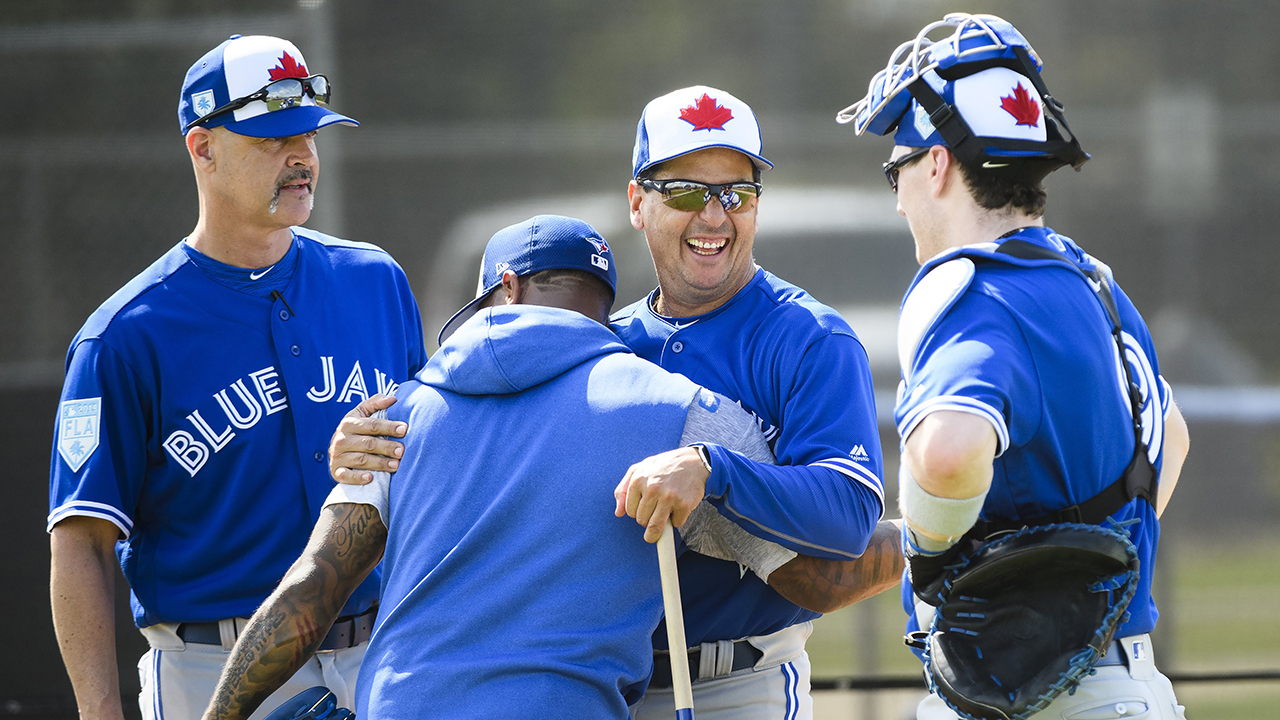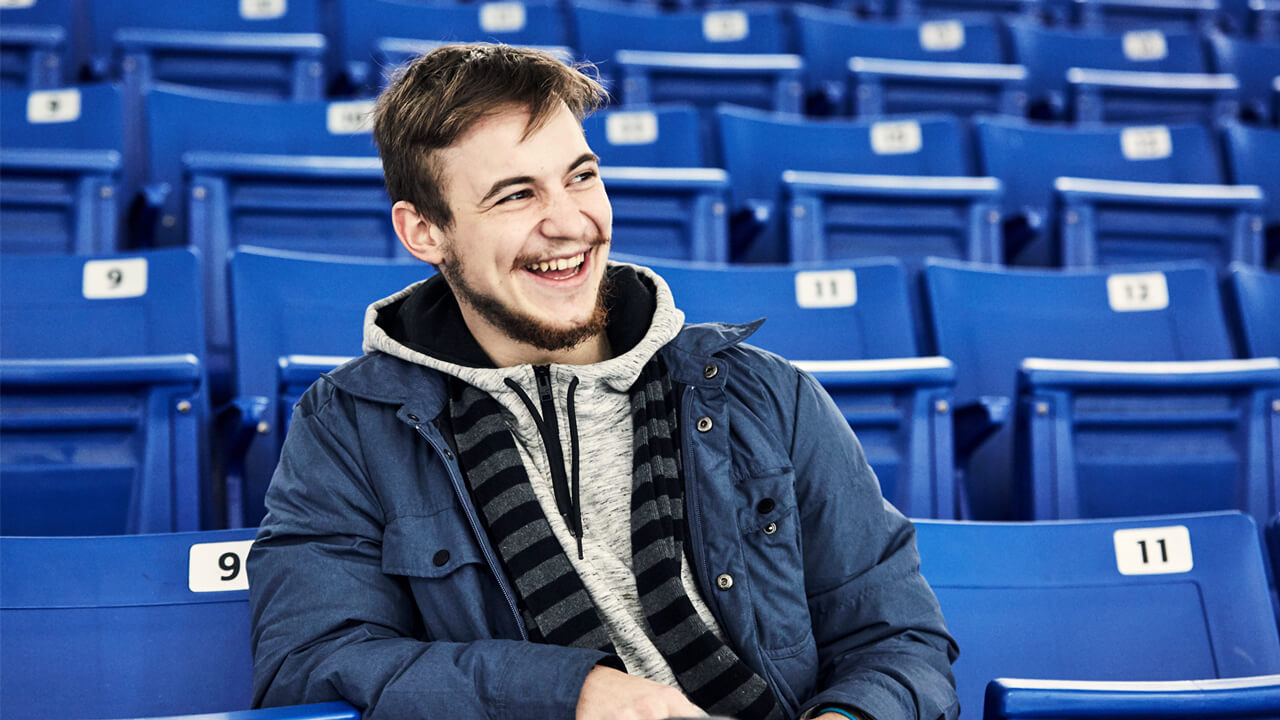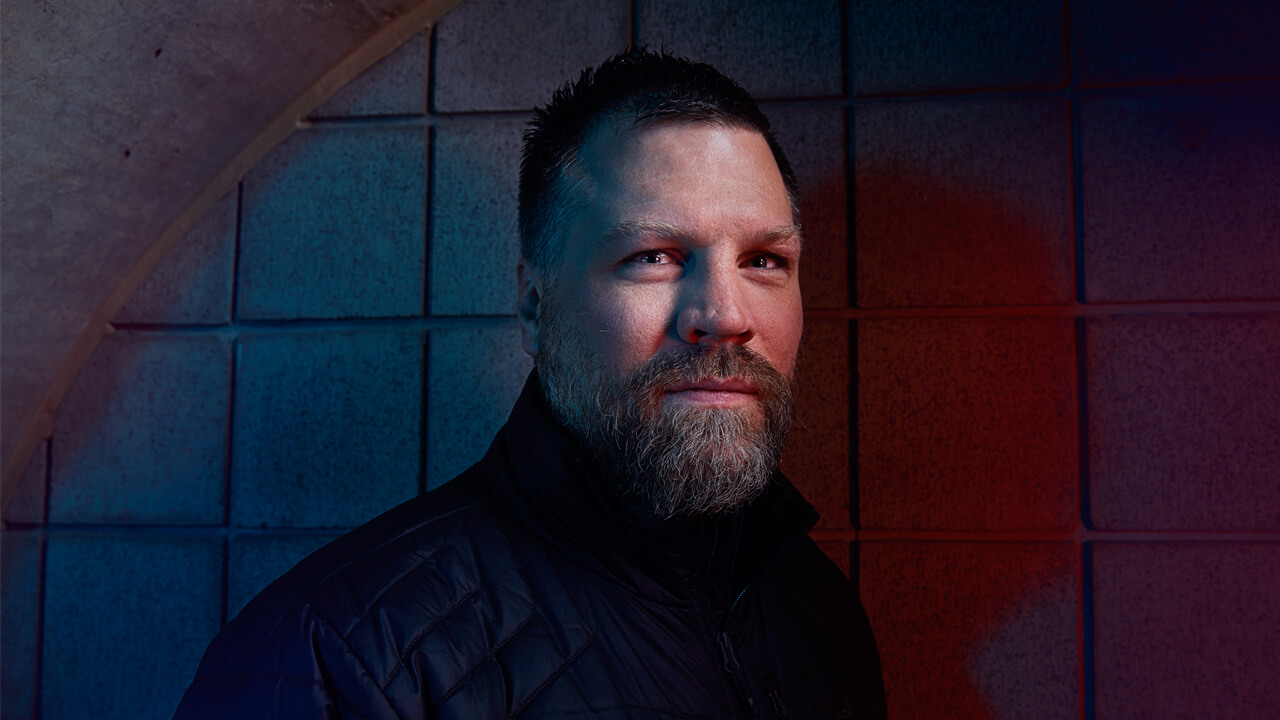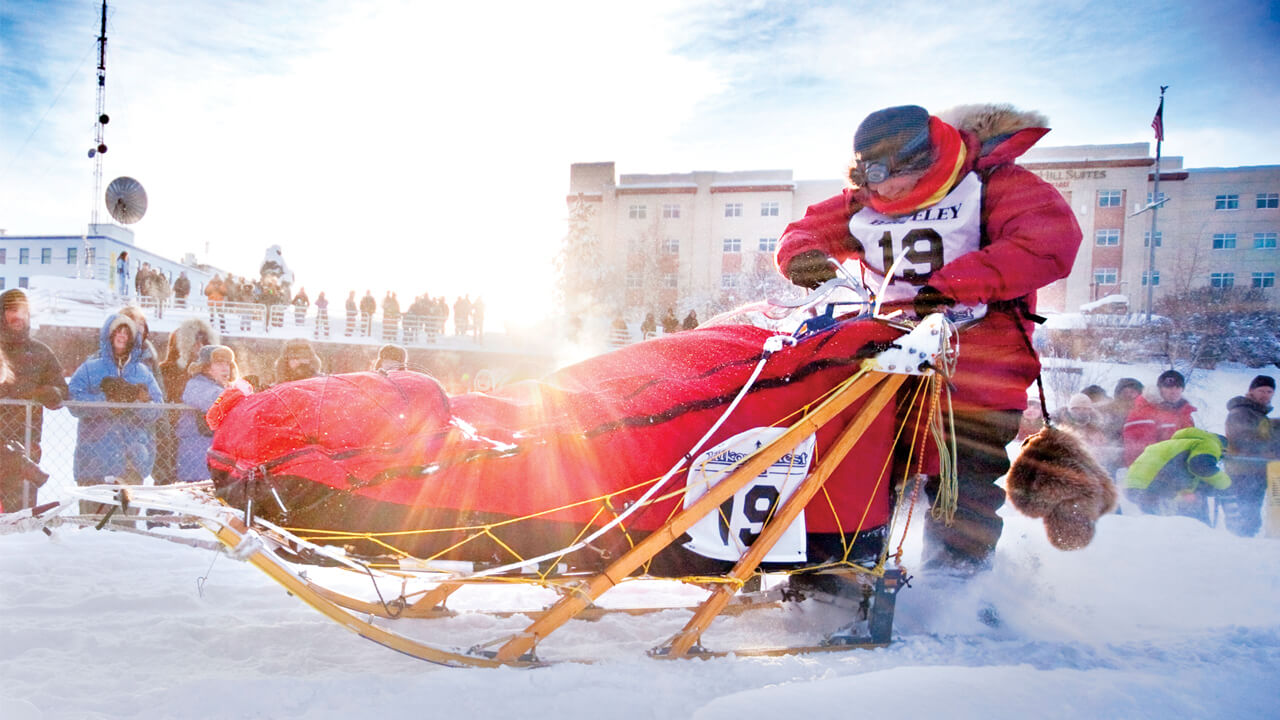James Paxton offers a warning at the foot of the front stairway. “It’s a little messy. I hope you don’t mind,” he says politely before beginning a tour of his home in Kirkland, a suburb east of Seattle. What awaits at the top of the steps is everything short of a neon sign announcing this is a man in transition. Black garbage bags dot the floor of the master bedroom like buoys. Suitcases filled with clothes lay open beside plastic bins full of towels. The mattress is bare and there’s a stack of pink-and-white pillows on a sofa at the foot of the bed.
One of the few shreds of normalcy is a Paxton bobblehead sitting on a dresser in the corner of the room. It will also be packed away soon, of course, because Paxton and his wife, Katie, are moving. However, on this Wednesday in late January, they aren’t even sure of the exact date — it could be as soon as this Friday. Significant memories exist here for the Paxtons: It was their first house as a couple — their off-season home is in Eau Claire, Wisc., Katie’s hometown. It was also the place Paxton returned to at the end of many days spent as a starting pitcher for the Mariners.
Paxton, a native of Ladner, B.C., stands six-foot-four. Today, he’s dressed in dark blue jeans, a black T-shirt and a navy Salty Crew cap that declares his passion for fishing. He’ll be on a river in Idaho next week looking to land as many Rainbow Trout as possible, and yet, despite the chaos around him, he’s already exuding the vibe of someone kicking back on a boat, rod in hand. “He’s moving and that’s a stressed-out time for a lot of people,” says Will Campbell, Paxton’s close friend and former college teammate. “But you can’t really sense the stress on him at all.”
Kirkland certainly allows for such tranquility. It’s a quiet area nestled far from the commotion of downtown Seattle. Tall, green trees stand in place of skyscrapers and Lake Washington is just a long toss away from Paxton’s front door. On this warm day, its water is glistening under the sun. The whole neighbourhood is like a postcard of idyllic life on the West Coast come to life. It’s also a blunt contrast to the place Paxton will live and ply his trade this upcoming season: New York City.
Fresh off the best campaign of his career — one that included a storybook no-hitter — the 30-year-old left-hander is tying up loose ends after an off-season trade sent him to the Yankees from the only MLB organization he’s ever known. Paxton is headed across the country to the centre of the baseball universe, where every pitch on the mound, and every step off of it, will be closely monitored by fans and media alike. Expectations will be lofty and that’s even before considering that, by virtue of his presence in the contender’s rotation, he’s poised to become the most prominent Canadian in the sport. It’s a daunting change and challenge, yes, but those who know Paxton say he’s well-equipped for it. And from the pitcher’s perspective, this is a grand opportunity — one that’s arriving at precisely the right time. “I feel like I’m ready for this next chapter,” he says. “I’m just excited to be on the big stage.”

Several baseball people have fallen in love with the potential in Paxton’s left arm over the years, perhaps none more so than Brian Williams. In 2009, Paxton was in his junior year at the University of Kentucky and Williams was an area scout for the Mariners, who held the No. 2 pick in that June’s MLB Draft. The pitcher had been on Williams’s radar for some time, but after observing Paxton during a particular intra-squad in February, the scout knew he’d seen enough and placed a call to his front office. “I go, ‘I know this is crazy, but I would take James Paxton with the second pick in the country overall,’” Williams recalls. “I was pounding the table.”
When Paxton graduated from high school, he was around six-foot and topped out at 88 miles per hour. But thanks to a growth spurt, he was solidly in the upper-90s by his third year at Kentucky. He became a full-time starter that season and his velocity, paired with above-average command, helped Paxton to an eye-popping 5.75 strikeout-to-walk ratio, with his signature performance coming in a 14-K outing against LSU, the eventual national champions. In addition to skill, Williams was impressed with Paxton’s calm demeanour. “He’s got an easy way about him that makes you comfortable,” says Williams, now a crosschecker with the Rangers. “It looks like it’s a Tuesday and he’s in Little League back in Ladner, British Columbia. He’s always had the ability to do that on the mound.”
Williams had his first chance to talk with Paxton’s parents, Ted and Barbara, during a visit the couple made to Kentucky in 2009. They chatted about life back home and told stories about raising James and his younger brother, Thomas, in a quiet suburb of Vancouver. As he would be with many of the stories he’d hear about Paxton over the years, Williams was struck by the determination the pitcher showed, even as a kid.
When he was 14, Paxton failed to make an all-star team many of his friends were selected for. Rejection left a bitter taste in his mouth, so he got his father to catch him nearly every day that summer; they would go to Leslie Park, just behind the family house, and spend hours throwing fastballs and curveballs, working on mechanics and command. He made the all-star team the next year. “James approaches all of these things quite matter of factly,” says Ted of his son. He has an ingrained method to help him manage stress, his father explains. He’ll identify a task and map out a full program before applying the discipline and effort needed to accomplish it.
Paxton utilized that systematic approach through college and beyond, but toward the end of his junior year, a minor injury and a few flat outings caused his draft stock to dip slightly. Williams didn’t get his wish, and the Mariners selected Dustin Ackley second. Paxton was eventually taken by the Blue Jays at No. 37. He didn’t come to an agreement with the club on a signing bonus, though, and public comments by the Blue Jays linking Scott Boras to Paxton as an agent, rather than a family adviser, led to controversy. Questions arose about the possibility Paxton had violated the NCAA’s “no agent rule,” a legal battle ensued and the pitcher eventually left Kentucky to showcase himself for the 2010 draft with the independent Grand Prairie AirHogs. “I learned that I can take it,” Paxton says of what the experience taught him. “I could go through hard times and come out the other side OK.”
The long layoff and his independent ball stint contributed to him slipping to the fourth round in 2010, when he was finally selected by Mariners. “When somebody goes through that, a lot of times scouts and organizations that don’t know the player ask, ‘Why?’ and question, ‘How bad does this guy really want to play?’” says Williams. “We didn’t have any questions about that. Certainly, with the work we did, we didn’t have any negative thoughts about what he went through.”

Paxton woke up the morning of Sept. 7, 2013, with one goal in mind: Pitch well against the Tampa Bay Rays in his major-league debut. He hadn’t been awake for long, though, when the goal was drastically altered: Just get through the day. Ted called Paxton that morning from Vancouver to let him know that his paternal grandfather, Lawrie, had died from pneumonia at age 90.
Paxton and his grandfather were close and the news was devastating, but a conversation with Ted helped crystallize the fact that Lawrie wouldn’t want anything to interfere with his grandson’s debut. The left-hander carried on as normally as he could and it was only while sitting at his locker before first pitch that his emotions finally hit him. “I was shaking,” says Paxton. “My first start, my grandfather just passed away. I’ve got 50 family members and a whole bunch of friends there. I was kind of losing it. I was dressed, ready for the game. Then, all of sudden, right before I walked out there, a calm came over me and I just relaxed and went out there and that was it.”
He can’t describe where the serenity came from, but the way Paxton pitched that night, it’s best not to ask questions. Walking out to the mound in the first inning, he pointed to the sky to dedicate the game to Lawrie and then threw six innings of four-hit ball, allowing just two runs, one earned. He tossed 95 pitches and collected the “W,” prompting a post-game fete at The Hawks Nest, a sports bar next to Safeco Field (now T-Mobile Park). Ted, who travelled to Seattle along with several members of the Paxton clan, estimates 100 family and friends packed the establishment for a few hours to cap off a day of wild emotional swings. “That’s probably the way my dad choreographed it, knowing him,” says Ted. “It was to take the attention off him and make it into a celebration, which is how it ended up.”
Shortly after the game, Paxton returned to B.C. for the funeral and, because he was between starts, he needed to throw a side session. Of course, he turned to his dad. It was raining, so they couldn’t go to their familiar spot behind the house. Instead, the battery headed to a covered area at Ladner Elementary where Ted donned his brother’s umpiring gear and a borrowed catcher’s mitt. He squatted down, just like old times, only now the 35 or so pitches were significantly harder, and cut through the air with the sharp, efficient movement of a dagger.
By all accounts, though, Ted did fine. It’s a moment the 62-year-old will forever cherish. After all, not many fathers get to catch the bullpen that follows their son’s first big-league start. “Who would want to?” Ted jokes. “It was thrilling. You definitely had to pay attention. He would help me out by letting me know what pitches were coming so that I knew what to expect. But I have misread pitches before and it hurts.”
Paxton is sitting on the ground in his bedroom next to a large frame encasing his grey No. 65 Mariners jersey and a game ball from the no-hitter he threw last May. The large Maple Leaf tattoo on his right forearm is impossible to miss. The detailed ink pays homage to B.C.’s Bowyer Island, where Paxton’s family has had a cottage since 1972. It even helped inspire his nickname two years ago, when then-Mariners bench coach Tim Bogar christened him “Big Maple.”
Paxton grew up watching B.C. lefty Jeff Francis — an 11-year MLB veteran and fellow alum of the North Delta Blue Jays — and says he strives to represent Canada in the same way. “I remember how much I respected him and how much he inspired me,” says Paxton. “Just to show me it was possible for a Canadian kid to go do stuff like that. Now, it’s really humbling and an honour to be that person for young baseball players in Canada who can say, ‘Hey, look at what he’s doing. Maybe I can be next.’”
Big Maple certainly offered a large helping of inspiration to north-of-the-border youth with that storybook no-hitter against none other than the Blue Jays at Rogers Centre. It saw him join Dick Fowler as the only Canadians to accomplish the feat in the majors, and brought a new level of attention — “It’s something I think about a lot. How special of an experience it was and how lucky I was that it happened in Canada,” he says. But it also served as an exclamation point to a coming of age that began in 2017.
Various injuries have plagued Paxton since his 2013 debut, limiting him to just 102 starts and 582.1 innings over parts of six seasons. None were of the serious elbow or shoulder variety, but they were still enough to keep him on the DL for significant chunks of time.
Mel Stottlemyre Jr., Paxton’s pitching coach for the past three seasons, notes that some of the injuries — a bruised left forearm thanks to a comebacker last August, for example — were simply out of the pitcher’s control. Others were the result of Paxton pushing too hard. “He’s a tireless, relentless worker,” says Stottlemyre. “We had to tame it. If he didn’t throw 45 to 50 pitches on the side at 90- to 100-per cent effort level, in his mind, he didn’t feel like he prepared himself.”
Over the past two seasons specifically, Stottlemyre has watched Paxton gradually begin to understand himself and how to attack hitters. He saw the pitcher learn to work smarter, not just harder, and notes that Paxton is now at the point where he’s making better decisions to manage his body.
Paxton reached career highs in starts (28), innings (160.1) and strikeouts (208) last year, improving over a 2017 campaign in which he began to realize his potential. His 8.4 WAR over the past two seasons ranks 13th among MLB pitchers, while his 95.4 mph average fastball velocity in 2018 was a hair behind Blake Snell, whose 95.8 led all left-handed starters. “He’s going to get that next level of greatness,” says Stottlemyre, now with the Marlins. “That next level for him is called ‘Consistency.’ To be able to do it and sustain that for more games over the course of the season is something that he’s striving to do.”
Along the way, Paxton also found time to hone his soft skills. Marco Gonzales, a Mariners teammate since August 2017, says Paxton was one of the first players to approach him when he was traded from the Cardinals; the two left-handers struck up a friendship and, along with veteran southpaw Wade LeBlanc, formed a trio who closely watched and broke down each other’s bullpens and mound performances. “James is very analytical,” says Gonzales. “He wants to know how you were feeling and what worked and how many times you threw this pitch and that pitch. He was very, very thorough in those post-game recaps. He thinks things through and he’s very methodical.”
That approach rubbed off on Gonzales, who admits he now tries to apply similar focus and preparation to his day-to-day work. Paxton’s hunger is admirable, says Gonzales, and he expects the challenge of his former teammate’s new situation to push him to new heights. “He was definitely one of the guys who wants to direct where the team is headed,” says Gonzales. “He wants to lead a winning team. He’s got that in him.”
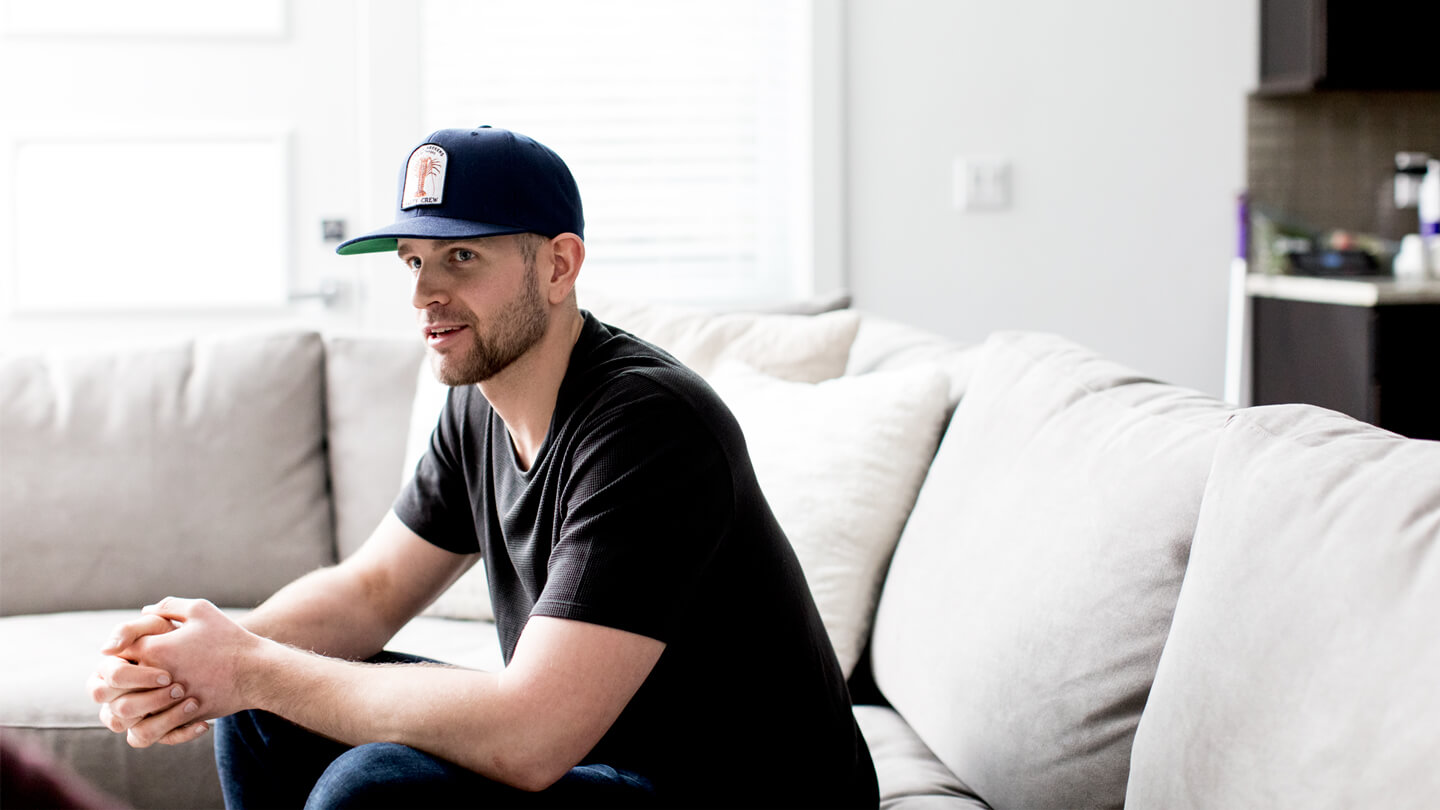
With the tour of his house finished, Paxton heads to the kitchen and mixes a protein shake. He’s been working with a nutritionist this winter and is hoping the newfound conscientiousness will help him stay on the field. He’s ditched diet soda to avoid aspartame and even spent three weeks on a keto plan designed to deplete his glycogen stores and reset his body. The results are evident in Paxton’s noticeably slimmer face and frame. He dropped 15 pounds this off-season, yet says he’s able to lift more weight than before.
He and Katie have also welcomed a golden doodle puppy named Duke into their family, adding another big change to the past several months. They haven’t yet found a place to live in New York, but a few spots have piqued their interest and the couple won’t exactly be fish out of water in the Big Apple. Katie spent six months there during college, and Paxton says he’ll be “banking on her to teach me the subway lines and help me figure out how to get to the field.”
Shades of New York have always existed in his life — his grandmother vividly recalls Paxton as an infant saying he wanted to grow up to play for the Yankees, and he portrayed Officer Krupke in a high-school staging of West Side Story — but he wasn’t thinking about that in mid-November when, while sitting in this very room, he learned he’d been traded to the Yankees for a package of prospects. “Right from the get go, I was pretty excited,” he says. “It’s a thrill to be playing in New York. It’s kind of like you’re being called upon by this super-traditional, historic team that everyone dreams about playing for. It feels like the pinnacle of baseball playing for the Yankees.”
Former Yankees lefty Andy Pettitte was one of Paxton’s favourite players as a kid — along with M’s flamethrower Randy Johnson — and the two met through Robinson Cano a few years back. Pettitte texted Paxton following the trade to say he was fired up the pitcher was joining the club. They plan to meet during spring training in Tampa, but until then, Paxton has been working to gain a deeper understanding of the world he’s entering. He recently spoke to former Yankees third baseman Scott Brosius, who was a coach with the Mariners for the past two seasons. Brosius was traded to the Bronx in 1997 from Oakland, a smaller media market not unlike Seattle, and offered Paxton advice on dealing with the press and pressure. “The goal was to try to really keep things as simple as possible,” Brosius says. “There’s just so much coverage and guys trying to create their own stories to get readers and things like that. So, at times, it can get a little complicated out there. Personally, I did not read articles about the Yankees or about myself. I wanted to stay out of it and just focus on doing my job.
“The other thing I shared was how great playing in New York and playing out East is,” Brosius adds. “The fan base is just so into the game and there’s so much energy and excitement at the ballpark. The thing that I learned about Pax the last few years was that he is a competitor and he really wants to win and be a part of a championship team, and so I told him I think he’s going to love it out there — he’s going to enjoy the atmosphere, day in and day out.”
Brosius played with Pettitte for four seasons and considers the pitcher one of his closest friends from those Yankees teams. He says there are striking similarities between Pettitte and Paxton — the quiet, dignified manner in which they carry themselves off the field and the competitive drive between the lines. Stottlemyre, whose late father, Mel Sr., was Pettitte’s pitching coach, also sees the likeness.
Not that success in New York is a given. The coach remembers his dad, who pitched in the Bronx for 11 years in his playing days, explaining the full weight of the pinstripes, and the attention that comes with them — the way the pressure of putting on the uniform could eat at a player’s confidence. How Paxton carries that weight remains to be seen. “Has he experienced the pressures of New York and the fans and the media and the expectations that happen to be great every outing? No,” says Stottlemyre. “Only going through that will let everybody know how he handles those situations. But, as far as his maturity and with him being wired the way he is, I think he’s going to be able to handle anything that they throw at him.”

A week has passed and Paxton is finally done with the move. He made it to Idaho with a group of friends and was accompanied on the river by a guide from Stottlemyre’s company, Stotts Fishing Adventures. The pitching coach was unable to join, but he’s seen what Paxton is like on the water.
Two years ago, Stottlemyre invited him to his family’s Cast for a Cure Celebrity Fishing Tournament and had to walk Paxton through the basics; he was essentially a beginner who fished a little as a kid, but never really had time to commit to the hobby. The coach advised Paxton on what type of clothes to buy and how the fish behave — he had never caught steelhead, which can be unpredictable, so the pitcher was facing a seemingly difficult challenge. “Lo and behold, he caught the most steelhead out of anybody in the tournament,” says Stottlemyre, who marvels at the instincts and patience Paxton displayed. “On the water, he’s got that same competitiveness as he does when he pitches. If you get to know James, he’s a laid-back guy and well-liked by people, but he’s a different human being when he crosses that line. There’s a competitive fire that burns inside him.”
The tournament sparked Paxton’s love for fishing, but it also served to highlight something that’s been evident throughout his baseball career: When placed in new, different and sometimes stressful circumstances, James Paxton is going to continue to be James Paxton. He’s going to apply his own methodical process and he’s going to figure it out.
“It doesn’t seem like anything could bother him,” says Gonzales, his former teammate with the Mariners. “It doesn’t seem like his blood pressure ever rises. It always seems like he’s the same guy.”
Edited by Evan Rosser
Designed by Craig Battle


